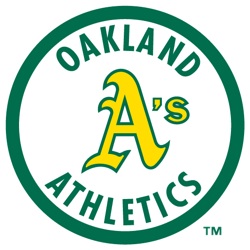We end 2017 with a countdown of the 10 biggest stories of the year on Ballpark Digest, as chosen by editors and partially based on page views. Today, #5: The ongoing quest for a new Athletics ballpark in Oakland.
Call it the Curse of Connie Mack. After the Athletics spent 55 years playing at the lovely and classic Shibe Park, the team has never had a truly long-term home where they were the featured tenant. When Arthur Johnson bought the A’s from Mack, his first move was to request a move to Kansas City, where the old Blues Stadium was torn down and a new ballpark built on the site. (That was not the original plan, which was to add a second deck to the existing ballpark. But the footings added years before were not up to the task, so the decision was made to tear everything down and build anew.) The new Municipal Stadium was not the greatest of ballparks—plenty of obstructed-view seats—and before long city officials were pushing a new ballpark on the outskirts of town. Alas, the A’s missed out on that new facility after Charles O. Finley had alienated the Kansas City powers that be, and the new ballpark was approved only after he had agreed to move the team. The A’s only spent 13 seasons at Municipal Stadium.
After a move to Oakland, the team had a great run at the Coliseum until Mount Davis was erected in center field, ruining the views from behind plate. Over time, the Coliseum was increasingly run down, with issues with the plumbing (resulting in raw sewage in the home clubhouse) and lack of upgrades in the fan spaces. It’s been clear for over a decade that the team is due for a new ballpark, but several attempts to procure a ballpark site in Fremont, San Jose and near Laney College in Oakland have all been dead ends. The Curse of Connie Mack lives on.
Most in baseball were not surprised to see the Fremont and San Jose efforts die—after all, the A’s working to move into San Francisco Giants territory, and MLB takes its territorial rights seriously—but the collapse of talks with the Peralta Community College District Board of Trustees for land for a new ballpark was certainly a surprise. Yes, there was plenty of opposition from students and faculty to putting a ballpark in a quiet Oakland neighborhood, but the quick end to discussions certainly blindsided Oakland A’s President Dave Kaval and the rest of the planning crew.
So where do the A’s go? Staying at the Coliseum is certainly not an option: turning the cookie-cutter facility into a baseball-only ballpark would require some compromises and wouldn’t address the problem of so many seats poorly configured for baseball. Building a new ballpark at the Coliseum site, complete with an Atlanta Braves-style development, would be a challenge but not the worst of ideas. Building at Howard Terminal, with its transit and cleanup issues, would solve a city problem but would create reminders of Candlestick Park; the A’s could issue Croix de Howard Terminal pins after extra-innings games, to reward fans for sticking out the cold winds.
Oakland is a very vibrant market, a city on the rise—filled with the young fans MLB marketers want to bring into the fold. But after so many misfires on the ballpark front, the Athletics front office needs to decide how many changes to give the East Bay before calling it a day, or begin chatting with one of the other municipalities seeking a big-league team. The A’s are tied for the most franchise moves in MLB history (tied with three; Milwaukee-St. Louis-Baltimore and Boston-Milwaukee-Atlanta are the others), and another would be a record—the kind you don’t want to set.
Previously in our Top Ten Stories of 2017 List:
#7: BB&T Ballpark at Historic Bowman Field
#8: Tampa Bay Rays Seek New Ballpark

